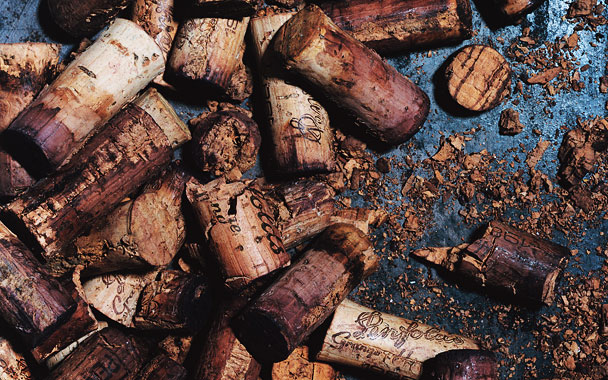A less convenient place for a wine bar I can’t even imagine,” my friend Richard said when I told him about Terroir, a new wine shop a couple blocks from San Francisco Prison on the edge of San Francisco’s SOMA district. An inconvenient location and the promise of “natural wines?” Of course we went.
The space is so spare that I thought we’d accidentally walked into the store’s offices or storage space. A single empty bottle of each of maybe 60 wines lined the walls.
These bottles form a personal, quirky selection. There’s artisanal Muscadet from Domaine de la Pepière; half-bottles of Chateau Musar’s obadieh, the Lebanese answer to chardonnay; a handful of small-production Beaujolais labels and a Sherry-styled palomino fino from Quady in California. Obscurity appeared to be the main criterion at first, but one of the owners quickly set me straight. “We look for natural wines—wines made with indigenous yeasts, and with little to no added sulfur,” he said.
This sounds incredibly geeky, but if you’re looking for wines that display terroir—that is, a sense of place, a scent, flavor and feeling so particular to wine raised in a certain place that it can transport you to that place—the yeast part is an essential point. You can make wine simply with the yeasts that exist on the skins of the grapes and in the air—unless consistency is the main point. Most vintners making wine in industrial quantities regard the risk of bad yeasts getting into the fermentation too great, and use cultured yeasts. They can buy yeasts according to what characteristics they want in their wine—it’s one reason why so many mass-produced wines taste so similar.
Adding tiny amounts of sulfur to wines to keep them stable is pretty much a given—many winemakers use it to protect the wine from oxygen and bacteria that can cause off flavors to develop—but the purists worry about it masking important flavor details. Without extra sulfur, wines are liable to deteriorate quickly without very careful handling. That’s why there are no full bottles on Terroir’s shelves—they are all kept refrigerated until the moment you buy them. “We tell people to pop the cork and drink it within two hours,” I’m told when I asked about a sulfur-free Beaujolais. “It’s beautiful stuff, but wait too long and it’ll crash and burn.”
I asked when they planned to have their inventory up online. “Never, most likely,” the guy behind the counter said as his coworker flipped over the record on the turntable. In part, they fear other retailers will try to pick up some of their labels and hone in on their business. More important, however, they fear that the wines will go misunderstood—a valid concern when some of the wines on the shelves are strikingly cloudy and deeply strange, with flavors from yeasts that are far wilder than what we’re accustomed to. “I don’t want someone to take home a bottle of Radikon and think it’s bad,” he said, referring to the white wine notable for its golden hue and nutty, savory flavors—alarming to those used to spanking-clean, bright whites. “I’d rather them come in, sit down, and try a few things—and we can be here to answer questions.” It’s a quaint idea, but sitting at the bar, sipping a vibrantly alive Beaujolais, and listening to TV on the Radio, it seemed a remarkably civilized way to sell wines.

